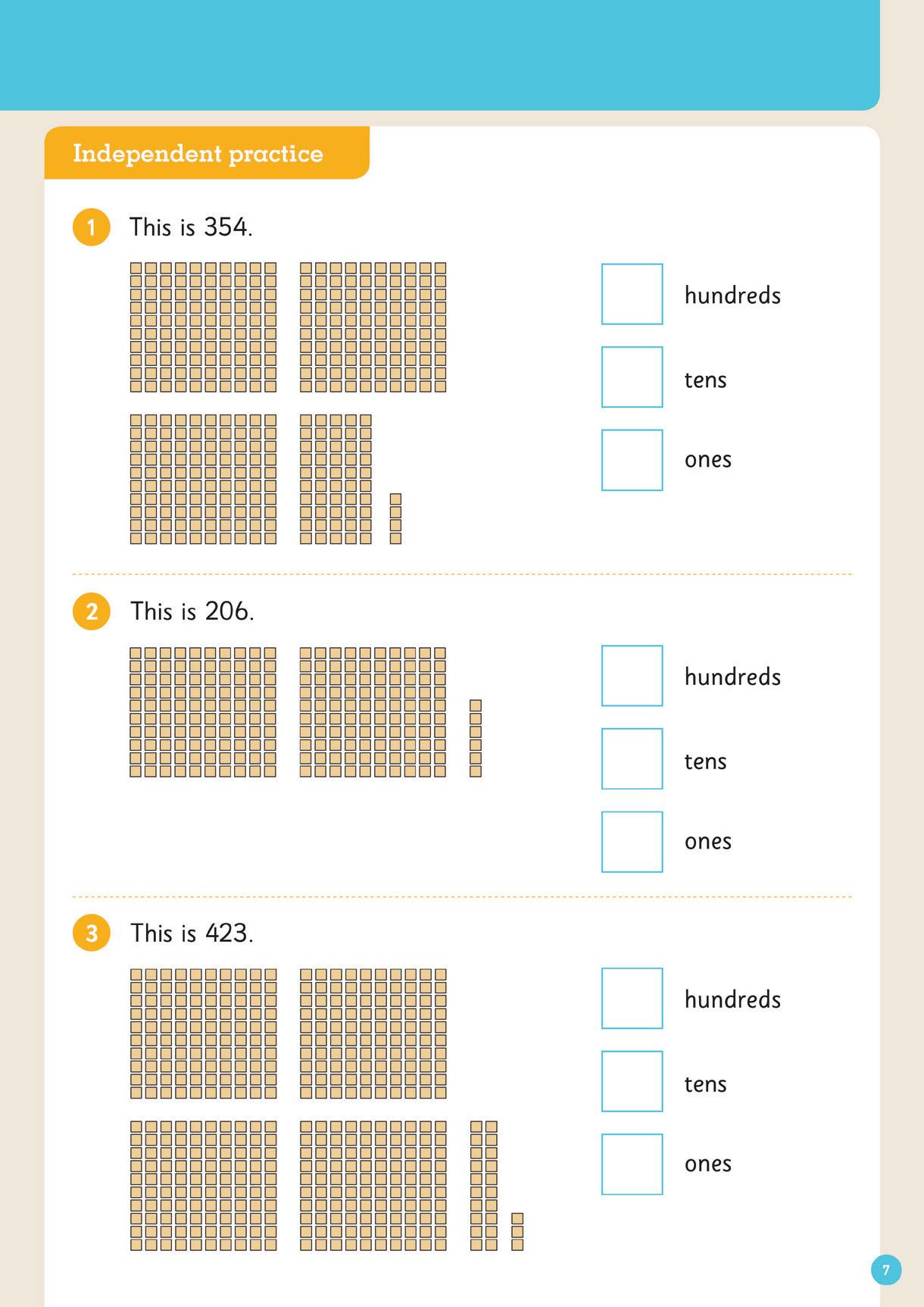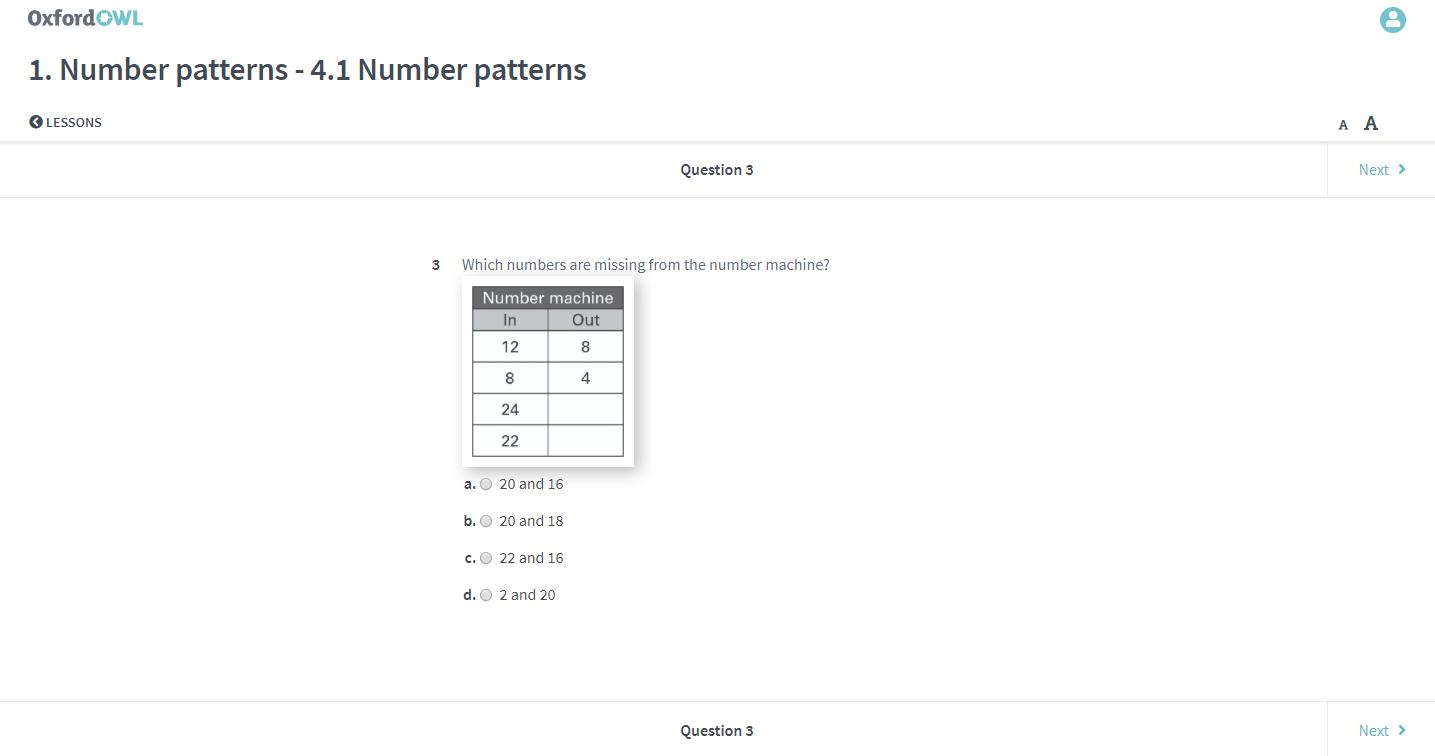Oxford Maths Third Edition



TEACHING AND LEARNING
Differentiation, also known as ‘targeted teaching’
Incorporates key elements of inquiry
HOW?
Uses pre- and post-tests to address students at their point of need
Offers multiple pathways for students
Supports the ‘gradual release of responsibility’ approach
Direct instruction
Hands-on activities
Small-group and whole-class tasks
Practice exercises
Open-ended problem-solving opportunities
The balanced approach helps students make connections with mathematics in the real world and encourages higher-order thinking and reasoning.
STUDENT MATERIALS
Student Books
Assessment Books
Practice and Mastery Books
Student Dashboards
The Teacher Dashboards provide online access to a wealth of resources and support material for Foundation to Year 6, including: Teaching resources
Interactive teaching tools to introduce concepts
Blackline masters, activity sheets, mastery tasks
Support and extension activities
Videos to explore potential difficulties around topics
Oxford Maths Ready teaching notes to support struggling learners
Planning and assessment material
Curricula and planning documents
Pre- and post-tests
Learning sequences and suggested pathways
Assessment grading guide
Answers
Markbook
Online assessment, tracking and reporting
The series is fully aligned with the Australian Curriculum: Mathematics v9.0 and the NESA Syllabus. Curriculum mapping documents are provided for Victoria and Western Australia.

Access the topic pre-test via the Assessment Books or the Teacher Dashboards, or direct students to the pre-test on the Student Dashboards.


Choose the appropriate learning sequence for each student via the Teacher Dashboards.
1 2
Assess and identify
Use the topic pre-test to quickly identify the level of each student’s understanding.
4
Assess the results
Use the topic post-test to measure student growth and identify areas of further need.

Access the topic posttest via the Assessment Books or the Teacher Dashboards, or direct students to the posttest on the Student Dashboards.
Choose the pathway
Identify the learning pathway for each student based on the pre-test result and your own observations.
3
Plan and implement teaching
Choose and prepare activities to effectively support student learning at their point of need.

Use the Teacher Dashboards to access lesson plans, learning support and teaching resources. Assign topic-based activities in the Student Books or Student Dashboards and additional practice activities in the Practice and Mastery Books.



The pre-tests allow educators to identify each student’s level of topic readiness, covering foundational content from the previous year and, where relevant, the breadth of subject matter for each topic at the target year level. The pre-tests can be found in the Assessment Books, on the Teacher Dashboards, or on the Student Dashboards.

Pre-test from Oxford Maths Year 2 Assessment Book.

Teacher Dashboards – Resources Tab


Based on the results of the pre-test, choose an appropriate learning sequence for each student: support, at standard, or extension level. If the students take the online pre-test, Markbook will automatically allocate the appropriate learning sequence for you.

SuggestedSequenceLearning and Student Pathway for Oxford Maths Year 2

Teacher and Student Dashboards, Student Books, Assessment Books, and Practice and Mastery Books



Educators can choose and prepare activities to effectively support student learning at their point of need, by accessing lesson plans, learning support and teaching resources on the Teacher Dashboards.
Students can be assigned topic-based activities in the Student Books, and given additional opportunities for practice by doing the practice quizzes on the Student Dashboard and activities in the Practice and Mastery Books, which follow exactly the same sequence of topics as the Student Books.
Available for Years F–6, the Teacher Dashboards provide online access to a wealth of teaching resources and support materials. Effectively support your students at their point of need by accessing lesson plans, learning support and teaching resources.
Resources for Teacher Dashboards include:
• a digital version of the Student Book (with notetaking and bookmarking functionality)
• curricula and planning documents
• learning sequences supporting differentiation pathways
• topic interactives
• videos exploring potential difficulties within topics
• Oxford Maths Ready teaching notes to support struggling learners
• access to student pre-tests, online quizzes and post-tests
• blackline masters, activity sheets, and mastery tasks
• assessment grading guides
• answers.



Available for Years F–6, the Student Dashboards deliver a tailored suite of resources for each topic based on students’ ability groups (extension, at standard, support), ensuring that every student can experience success at their level.
Resources for Student Dashboards include:
• a digital version of the Student Book (with notetaking and bookmarking functionality)
• Oxford Dictionary look-up feature
• online pre-tests
• practice quizzes
• online post-tests.
Oxford Maths Year 2
DashboardTeacher for Unit 1: Topic 1
Place value

Teaching and learning resources for
Unit 1: Topic 1
Place value
UNIT 1: TOPIC 1
Place value
PracticeGuided page from Oxford Maths Year 2 Student Book, Unit 1: Topic 1 Place value
This is a one.This is 12 ones OR 1 ten and 2 ones. This is 120 ones OR 1 hundred and 2 tens.
Guided practice
1 How many?
2 Write the numbers.
In a 3-digit number, the first digit is hundreds, the second is tens and the third is ones.


PracticeIndependent page from Oxford Maths Year 2
Student Book, Unit 1: Topic 1
Place value
Extended Practice page from Oxford Maths Year 2
Student Book, Unit 1: Topic 1
Place value


Practice page from Oxford Maths Practice and Mastery Book Year 2, Unit 1: Topic 1 Place value

Challenge page from Oxford Maths Practice and Mastery Book Year 2, Unit 1: Topic 1 Place value
Mastery page from Oxford Maths Practice and Mastery Book Year 2, Unit 1: Topic 1 Place value
Mastery
1 These are parts of a hundred chart.
a Write the number 44 in a square on the third row. Fill in the blanks.
b Write the number 44 in a different square on the grid. Fill in the blanks.
2 Put these numbers in order from smallest to biggest. 132 231 213 123
3 Use each digit once to make as many three-digit numbers as you can. 4 a Circle the number that is the best estimate for how many items there are.

Pre- and post-tests – Markbook, Assessment Books, Teacher and Student Dashboards


The post-tests allow educators to measure student growth, confirm the effectiveness of the learning sequence and identify areas of further need for the topic or concept.
The post-tests also allow educators to identify students who are performing above the expected standard, as the tests comprehensively cover the target year level and some content from the next year level.
Pre-tests
Each topic in the Oxford Maths Student Dashboards begin a pre-test.
Pre-tests are made up of multiple choice questions designed to identify each student’s level of understanding and automatically allocate them to one of three ability groups: support, at standard or extension.
Oxford Maths Pre-tests evaulate students’ level understanding.of

After completing pre-test, students are presented with a selection of ability-appropriate learning resources and assessments. Alternatively, teachers can enter the result of the pre-test from the Assessment Book to unlock the student resources.
Post-tests
Post-tests allow educators to observe student progress, confirm the effectiveness of the teaching sequence and identify areas of further need for the topic or concept.
They provide a quick and easy way of assessing a student’s achievement level in a particular topic.
Oxford MathsPost-tests show students results.

Further information on post-test grading is provided on the Teacher Dashboards. When students complete the online post-tests, their results will automatically appear in the Markbook on the Teacher Dashboard. Or teachers can record the results of the post-tests from the Assessment Book.
Markbook functionality is incorporated into the Teacher Dashboards, streamlining administration and allowing educators to focus on teaching.
Markbook provides an easyto-access snapshot of class and student progress, enabling teachers to view test performance, highlight areas of success and identify opportunities for additional support.
Oxford Maths Markbook use progress reports to compare students’ results to class averages.



Oxford MathsMarkbook review student results
With Markbook, teachers can:
• enter, view or adjust student ability group (extension, at standard, support) for every topic
• view and print results from practice quizzes and post-tests
• filter test results by class or group
• view results and progress reports by unit or topic
• export results and progress reports
• chart students’ results and compare them to class averages
• add comments to student results
• create, track and record custom assessment task results.


Post-test from Oxford Maths Year 2 Assessment Book, Unit 1: Topic 1 Place value
4 Write the number. 1 How many? 6 307 can be renamed: 30 tens and 7 ones. 37 tens and 0 ones. 3 tens and 17 ones. 37 ones. 3 Write the number. 5 What are the four black beads worth?
